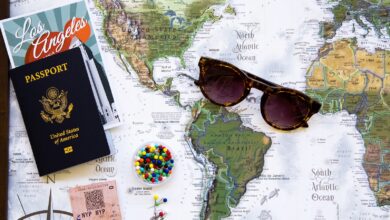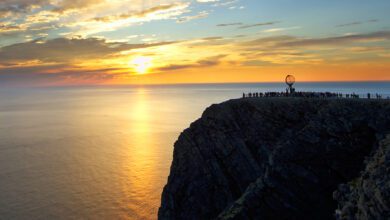
Experience the enchanting beauty of Sri Lanka through the eyes of a UAE traveler as they explore the breathtaking tea plantations and beyond. Get a glimpse of the lush landscapes, aromatic tea leaves, and vibrant culture that will transport you to this tropical paradise. Join us on this immersive journey as we unravel the hidden gems and captivating attractions that make Sri Lanka a must-visit destination for every travel enthusiast. Get ready to be captivated by the sights, sounds, and scents of this remarkable country.
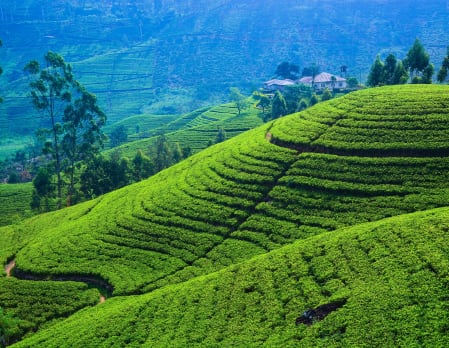
Tea Plantations in Sri Lanka
History of Tea Production in Sri Lanka
Sri Lanka, formerly known as Ceylon, has a rich history of tea production that dates back to the British colonial era. It was during the 19th century that the British introduced tea cultivation to Sri Lanka, transforming the island nation into one of the world’s largest tea-producing countries. The favorable climate and fertile soil of the central highlands provided the perfect conditions for growing tea, and soon vast plantations were established across the region. Today, tea is an integral part of Sri Lankan culture and economy, contributing significantly to the country’s exports.
Famous Tea Regions in Sri Lanka
Sri Lanka is divided into several distinct tea-growing regions, each offering its unique characteristics and flavors. The most famous among them are Nuwara Eliya, Dimbula, Uva, and Kandy. Nuwara Eliya, often referred to as “Little England,” boasts a cool climate and produces some of the finest high-grown teas with a delicate flavor and aroma. Dimbula, located in the central highlands, is renowned for its medium-grown teas that are known for their strong and rich flavor profiles. Uva, with its high altitude and eastern monsoon, produces teas with a distinct and unique taste. Kandy, the cultural capital of Sri Lanka, offers teas known for their full-bodied and robust flavors.
Tea Production Process
Tea production in Sri Lanka follows a meticulous process that involves several stages. It begins with the careful selection of tea bushes and the planting of young saplings in well-prepared soil. These bushes are meticulously pruned and maintained to ensure optimal growth and yield. Once the tea leaves have matured, they are carefully plucked by skilled workers. The plucked leaves then go through withering, rolling, and oxidization processes, which determine the flavor and characteristics of the final tea product. Finally, the tea leaves are dried, sorted, and packaged for distribution to local and international markets.
Tea Tasting and Appreciation
Visiting a tea plantation in Sri Lanka offers a unique opportunity to indulge in the sensory experience of tea tasting and appreciation. Many plantations and tea factories welcome visitors and offer guided tours where visitors can learn about the art of tea production and sample different varieties of tea. During a tea tasting session, you can learn to identify the subtle nuances of aroma, flavor, and color in various types of tea. From light and floral to strong and bold, Sri Lankan teas cater to a wide range of tastes and preferences. Whether you prefer black tea, green tea, or white tea, there is something to delight every tea enthusiast.
Exploring Sri Lankan Culture
Traditional Sri Lankan Cuisine
Sri Lankan cuisine is a delightful fusion of flavors and spices that reflects the country’s rich cultural heritage. Influenced by Indian, Dutch, Portuguese, Malay, and Moorish cuisines, Sri Lankan dishes are characterized by their bold flavors and vibrant colors. Rice and curry, the staple food of Sri Lanka, is a must-try dish that includes a variety of curries, sambols, and accompaniments. The use of aromatic spices such as cinnamon, cardamom, curry leaves, and chili peppers adds depth and complexity to the flavors. Other traditional dishes worth exploring include hoppers (a type of pancake), string hoppers, kottu roti, and seafood delicacies.

Festivals and Celebrations
Sri Lanka is a land of festivals and celebrations, where vibrant colors, music, dance, and religious rituals come together to create a truly immersive cultural experience. One of the most iconic festivals in Sri Lanka is the Sinhala and Tamil New Year, which marks the beginning of the traditional New Year in April. The festival is a time of joyous celebrations, with traditional games, music, and elaborate feasts. Other significant festivals include Vesak, which commemorates the birth, enlightenment, and death of Lord Buddha, and the Esala Perahera, a grand cultural pageant held in Kandy to honor the Sacred Tooth Relic of the Buddha.
Traditional Arts and Crafts
Sri Lanka is renowned for its exquisite traditional arts and crafts, which showcase the country’s rich artistic heritage. From intricate wood carvings and handloom textiles to vibrant paintings and pottery, the craftsmanship of Sri Lankan artisans is truly awe-inspiring. The city of Kandy, in particular, is known for its traditional crafts, including brass and silverware, batik textiles, and lacquerwork. Visiting traditional craft centers and workshops offers a unique opportunity to witness these skilled artisans in action and even purchase one-of-a-kind souvenirs to take back home.
Historical Sites and Monuments
Sri Lanka’s ancient history is reflected in its numerous historical sites and monuments, which stand as a testament to the island’s rich cultural and architectural heritage. The UNESCO World Heritage Sites of Sigiriya, Anuradhapura, and Polonnaruwa are among the most significant ancient cities to explore. Sigiriya, also known as the Lion Rock, is a majestic fortress built atop a towering rock and provides breathtaking panoramic views of the surrounding landscapes. Anuradhapura and Polonnaruwa, on the other hand, are ancient kingdoms that house magnificent ruins, stupa complexes, and Buddhist monasteries.
Nature and Wildlife in Sri Lanka
Biodiversity in Sri Lanka
Sri Lanka is a biodiversity hotspot, boasting an incredible variety of flora and fauna within its compact borders. From lush rainforests to pristine beaches, the island is home to numerous ecosystems that support an array of plant and animal species, many of which are endemic to the country. Sri Lanka’s biodiversity includes majestic elephants, elusive leopards, colorful birds, reptiles, and an abundance of marine life along its coastline. With national parks, wildlife sanctuaries, and protected reserves, the country offers ample opportunities for nature enthusiasts to explore and appreciate its remarkable biodiversity.
National Parks and Wildlife Sanctuaries
Sri Lanka is home to several national parks and wildlife sanctuaries that provide a haven for its diverse wildlife. Yala National Park, located in the southeastern part of the country, is renowned for its leopard population and is one of the best places in the world to spot these elusive creatures. Udawalawe National Park, on the other hand, is famous for its large elephant herds and offers visitors the chance to observe these gentle giants up close. Other notable national parks include Wilpattu, known for its leopards and sloth bears, and Minneriya, famous for its “Gathering” of elephants during the dry season.

Birdwatching Opportunities
For birdwatching enthusiasts, Sri Lanka is a paradise brimming with avian diversity. With over 400 bird species recorded on the island, including numerous endemic and migratory species, Sri Lanka offers excellent birdwatching opportunities throughout the year. The Sinharaja Forest Reserve, a UNESCO World Heritage Site, is a prime location for birdwatching, with its dense rainforests teeming with colorful and exotic birdlife. Bundala National Park, a Ramsar Wetland Site, is another fantastic birdwatching destination, where visitors can spot migratory birds and waterfowl. Other notable birdwatching areas include Horton Plains National Park, Kumana National Park, and Kalametiya Bird Sanctuary.
Trekking and Hiking Routes
Sri Lanka’s varied landscapes and lush green hills offer picturesque trekking and hiking opportunities for outdoor enthusiasts. From challenging hikes to gentle strolls, there are trails catering to all levels of fitness and experience. The Knuckles Mountain Range, located in the central highlands, is a popular destination for trekking, offering breathtaking views and an opportunity to witness the diverse flora and fauna of the region. Horton Plains National Park is home to the famous World’s End trail, which culminates in a sheer drop offering stunning vistas. Ella Rock and Adam’s Peak are other popular hiking destinations, providing unforgettable experiences and panoramic views of the surrounding landscapes.
Beach Paradise in Sri Lanka
Top Beach Destinations in Sri Lanka
Sri Lanka’s coastline is blessed with pristine beaches that cater to all types of beachgoers, from tranquility seekers to water sports enthusiasts. Some of the top beach destinations in the country include Bentota, Hikkaduwa, Unawatuna, Mirissa, and Arugam Bay. Bentota is known for its calm waters, making it an ideal spot for swimming and water sports such as jet skiing and banana boating. Hikkaduwa and Unawatuna are popular for their vibrant coral reefs, perfect for snorkeling and diving. Mirissa offers beautiful sandy beaches and is renowned as a hotspot for whale watching, while Arugam Bay is a surfer’s paradise, attracting wave riders from around the world.

Water Sports and Activities
With its crystal-clear waters and favorable wind conditions, Sri Lanka offers a plethora of water sports and activities for adrenaline junkies and water enthusiasts. Surfing is particularly popular along the southern and eastern coasts, with Arugam Bay being the ultimate hotspot for catching world-class waves. Kiteboarding and windsurfing are also gaining popularity, especially in Kalpitiya and Mannar. Snorkeling and diving allow visitors to explore the vibrant marine life and coral reefs, showcasing an underwater world teeming with colorful fish and other fascinating creatures. Jet skiing, kayaking, and deep-sea fishing are other thrilling activities available for those seeking an adventure-filled beach vacation.
Leisure and Relaxation
If relaxation is what you seek, Sri Lanka’s serene beaches provide the perfect setting to unwind and soak up the tropical ambiance. From endless stretches of powdery white sand to secluded coves framed by swaying palm trees, the country’s beach resorts offer a tranquil escape from the hustle and bustle of daily life. Indulge in a rejuvenating spa treatment, practice yoga on the beach at sunrise, or simply lounge in a hammock with a good book. With the warm sun on your skin and the soothing sound of the waves as your backdrop, you’ll find a sense of peace and serenity that only a beach paradise like Sri Lanka can offer.
Coastal Cuisine and Seafood
No beach vacation is complete without indulging in the delectable coastal cuisine and fresh seafood that Sri Lanka has to offer. From beachside shacks to fine-dining restaurants, you’ll find an array of culinary delights that showcase the country’s coastal flavors. Treat your taste buds to mouthwatering seafood curries, grilled prawns, lobster, and crab preparations, all infused with aromatic spices and herbs. Don’t miss the opportunity to try street food specialties like kottu roti, isso wade (prawn fritters), and fish ambul thiyal (sour fish curry). With its diverse culinary offerings, Sri Lanka’s coastal cuisine is sure to leave you craving for more.
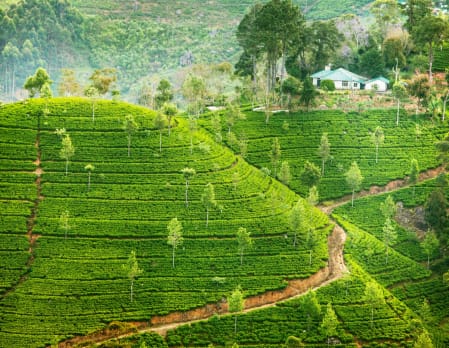
Exploring Sri Lanka’s Ancient Cities
UNESCO World Heritage Sites
Sri Lanka is home to a remarkable collection of UNESCO World Heritage Sites, which offer a glimpse into the country’s ancient civilizations and architectural wonders. The Sacred City of Anuradhapura, established in the 4th century BC, was once the political and religious capital of Sri Lanka and houses several ancient structures, including enormous dagobas (stupas) and impressive monastic complexes. The Ancient City of Polonnaruwa, dating back to the 10th century AD, features well-preserved ruins of temples, palaces, and statues. The Golden Temple of Dambulla, Sigiriya Rock Fortress, and Galle Fort are among other notable UNESCO sites that should not be missed.
Anuradhapura: The First Capital
Anuradhapura, once the glorious capital of ancient Sri Lanka, holds immense historical and religious significance. The city flourished for over a millennium and was a center of Theravada Buddhism. Today, it is a UNESCO World Heritage Site and a pilgrimage destination for Buddhists. Exploring Anuradhapura takes you on a journey through time, as you witness the massive dagobas such as the Ruwanwelisaya and Jetavanaramaya, ancient monasteries, intricately-carved stone pillars, and the sacred Sri Maha Bodhi tree, believed to be the oldest recorded tree in the world. The spiritual aura and architectural grandeur of Anuradhapura create a truly awe-inspiring experience.
Polonnaruwa: A Glimpse of Ancient Ruins
Polonnaruwa, the second ancient capital of Sri Lanka, showcases the grandeur of a bygone era. Built in the 11th century AD, it served as the center of political and cultural advancement during the reign of the Chola dynasty. The ancient city is known for its well-preserved ruins, including the impressive Gal Vihara, a rock temple housing four colossal statues of the Buddha. The Royal Palace, Audience Hall, and the Quadrangle with its exquisite stone carvings are among other highlights of Polonnaruwa. Exploring the ancient city allows you to immerse yourself in the history and architectural brilliance of medieval Sri Lanka.

Sigiriya: The Majestic Lion Rock
Sigiriya, also known as the Lion Rock, is a UNESCO World Heritage Site and an iconic attraction in Sri Lanka. Rising dramatically from the surrounding plains, this fortress complex is a testament to ancient engineering and architectural prowess. Climbing to the top of Sigiriya is not only a physical challenge but also a journey through history. The climb takes you past the famous frescoes of the Sigiriya Maidens, vibrant murals that depict ancient beauties. Atop the rock, you’ll find the remnants of King Kasyapa’s palace, elaborately designed gardens, and breathtaking panoramic views of the surrounding countryside. Sigiriya is a must-visit destination for history buffs and nature lovers alike.
Religious and Spiritual Sites
Buddhist Temples and Monasteries
Sri Lanka is predominantly a Buddhist country, and Buddhism has deeply influenced its culture and way of life. The island nation is home to numerous Buddhist temples and monasteries, each with its unique architectural style and sacred relics. The Temple of the Tooth in Kandy, also known as Sri Dalada Maligawa, houses the sacred tooth relic of Lord Buddha and is one of the holiest sites in Buddhism. The Dambulla Cave Temple, on the other hand, is a complex of ancient rock caves adorned with magnificent Buddhist murals and statues. Paying a visit to these sacred sites provides a glimpse into the spirituality and religious fervor of the Sri Lankan people.

Hindu Kovils and Shrines
With a significant Tamil population, Sri Lanka is also home to many Hindu kovils (temples) and shrines. The Temple of Shri Munneshwaram, situated in Chilaw, is one of the most important Hindu religious sites in the country. Dedicated to Lord Shiva, it attracts devotees from all over the island. The Nallur Kandaswamy Kovil in Jaffna is another prominent Hindu temple, renowned for its vibrant festivals and cultural events. The Kovil of Ramakrishna Mission in Colombo is a beautiful place of worship that promotes Hindu philosophy and spirituality. These temples and shrines are testament to Sri Lanka’s multicultural fabric and the harmonious coexistence of different religious communities.
Christian Churches
The arrival of European colonial powers, particularly the Portuguese, Dutch, and British, introduced Christianity to Sri Lanka. The country is dotted with beautiful churches that showcase different architectural styles influenced by these colonial rulers. The St. Mary’s Church in Negombo is one of Sri Lanka’s oldest and most significant Catholic churches, attracting pilgrims and visitors from around the world. The Dutch Reformed Church in Galle, with its colonial-era design and serene ambiance, is another notable Christian landmark. These churches not only serve as places of worship for the Christian community but also bear testament to Sri Lanka’s colonial past.
Islamic Mosques
The Muslim community in Sri Lanka has a rich religious heritage, with mosques scattered across the island. The Jami Ul-Alfar Mosque, also known as the Red Mosque, is an iconic landmark in Colombo. With its vivid red and white striped façade, it stands as a symbol of the nation’s Islamic heritage. The Ketchimalai Mosque in Beruwala is one of the oldest mosques in Sri Lanka and is located in close proximity to the famous Barberyn lighthouse. These mosques serve as important places of worship and cultural centers for the Muslim community, adding to the multicultural tapestry of Sri Lanka.
Adventure Tourism in Sri Lanka
White Water Rafting
Sri Lanka’s rivers offer exhilarating white water rafting adventures for adrenaline junkies. The Kitulgala region, located in the central highlands, is considered the hub for white water rafting in the country. The Kelani River, with its rapids ranging from gentle to challenging, provides the perfect setting for an adrenaline-pumping rafting experience. As you navigate through the rapids, you’ll be surrounded by lush greenery, cascading waterfalls, and breathtaking landscapes, creating a thrilling and picturesque adventure.
Surfing and Windsurfing
Sri Lanka’s picturesque coastline provides excellent surfing and windsurfing conditions, attracting enthusiasts from around the world. Arugam Bay, located on the east coast, is the country’s most famous surf spot, offering consistent waves that cater to all levels of experience. Weligama Bay, Hikkaduwa, and Mirissa are other popular surfing destinations along the southern coast. With warm waters and consistent wind patterns, these coastal areas are also perfect for windsurfing, allowing you to glide across the water and experience the thrill of the sea in a whole new way.
Whale and Dolphin Watching
Sri Lanka is one of the best places in the world for whale and dolphin watching, with its warm waters serving as a feeding ground and migration route for several marine species. Mirissa, on the southern coast, is a popular spot for whale watching tours, where you can witness the majestic blue whales, the largest creatures on Earth, as well as other species such as sperm whales and dolphins. Trincomalee, located on the east coast, also offers fantastic opportunities for whale and dolphin watching, particularly during the migration season from May to October. Embarking on a boat safari allows you to get up close to these incredible marine creatures and create unforgettable memories.
Hot Air Ballooning
For a truly unique and breathtaking experience, hot air ballooning in Sri Lanka offers a bird’s-eye view of the island’s stunning landscapes. The cultural triangle, comprising the ancient cities of Anuradhapura, Polonnaruwa, and Sigiriya, provides the perfect backdrop for an unforgettable hot air balloon ride. As you ascend into the sky, you’ll be greeted with panoramic views of lush green forests, ancient ruins, and picturesque countryside. The tranquility and serenity of floating above the landscapes, with the soft morning light casting a golden hue, make hot air ballooning an enchanting adventure not to be missed.
Ayurveda and Wellness
Traditional Ayurvedic Treatments
Ayurveda, an ancient system of medicine, has been practiced in Sri Lanka for centuries and offers a holistic approach to wellness. The country is dotted with Ayurvedic spas and wellness retreats that provide a range of traditional treatments and therapies aimed at rejuvenating the mind, body, and soul. From herbal massages and steam baths to yoga and meditation sessions, Ayurvedic treatments help restore balance and promote overall well-being. Ancient healing techniques and natural remedies are combined to create personalized treatment plans, ensuring a truly transformative wellness experience.
Yoga and Meditation Retreats
Sri Lanka’s serene landscapes and tranquil atmosphere make it an ideal destination for yoga and meditation retreats. Whether you are a seasoned practitioner or a beginner, there are numerous retreat centers offering immersive experiences that combine yoga, meditation, and mindfulness practices. From beachside retreats to secluded mountain getaways, you can choose the perfect setting to disconnect from the outside world and reconnect with yourself. In the midst of nature’s beauty, surrounded by lush greenery and the soothing sound of waves or birdsong, you can embark on a journey of self-discovery and inner peace.
Spas and Wellness Centers
Sri Lanka’s spas and wellness centers provide a haven for relaxation, rejuvenation, and pampering. From luxurious beach resorts to boutique hotels and dedicated wellness retreats, you’ll find a range of options to suit your preferences. Indulge in traditional Ayurvedic treatments, therapeutic massages, and beauty therapies using natural, locally-sourced ingredients. Take a dip in natural hot springs or mineral-rich mud baths, known for their healing properties. Immerse yourself in the tranquil ambiance and let the expert therapists take care of your well-being, leaving you feeling refreshed and revitalized.
Ayurvedic Cuisine and Herbal Remedies
Ayurveda places great emphasis on proper nutrition and the use of herbal remedies for maintaining health and well-being. Sri Lanka’s cuisine incorporates Ayurvedic principles by using fresh, locally sourced ingredients and a variety of medicinal herbs and spices. Ayurvedic cuisine focuses on balancing the three doshas (Vata, Pitta, and Kapha) and promoting optimal digestion and nourishment. Ayurvedic herbal remedies, such as herbal teas, tonics, and concoctions, are widely available in Sri Lanka, and many Ayurveda resorts offer cooking classes and workshops where you can learn to prepare nourishing meals and use herbal remedies for self-care.
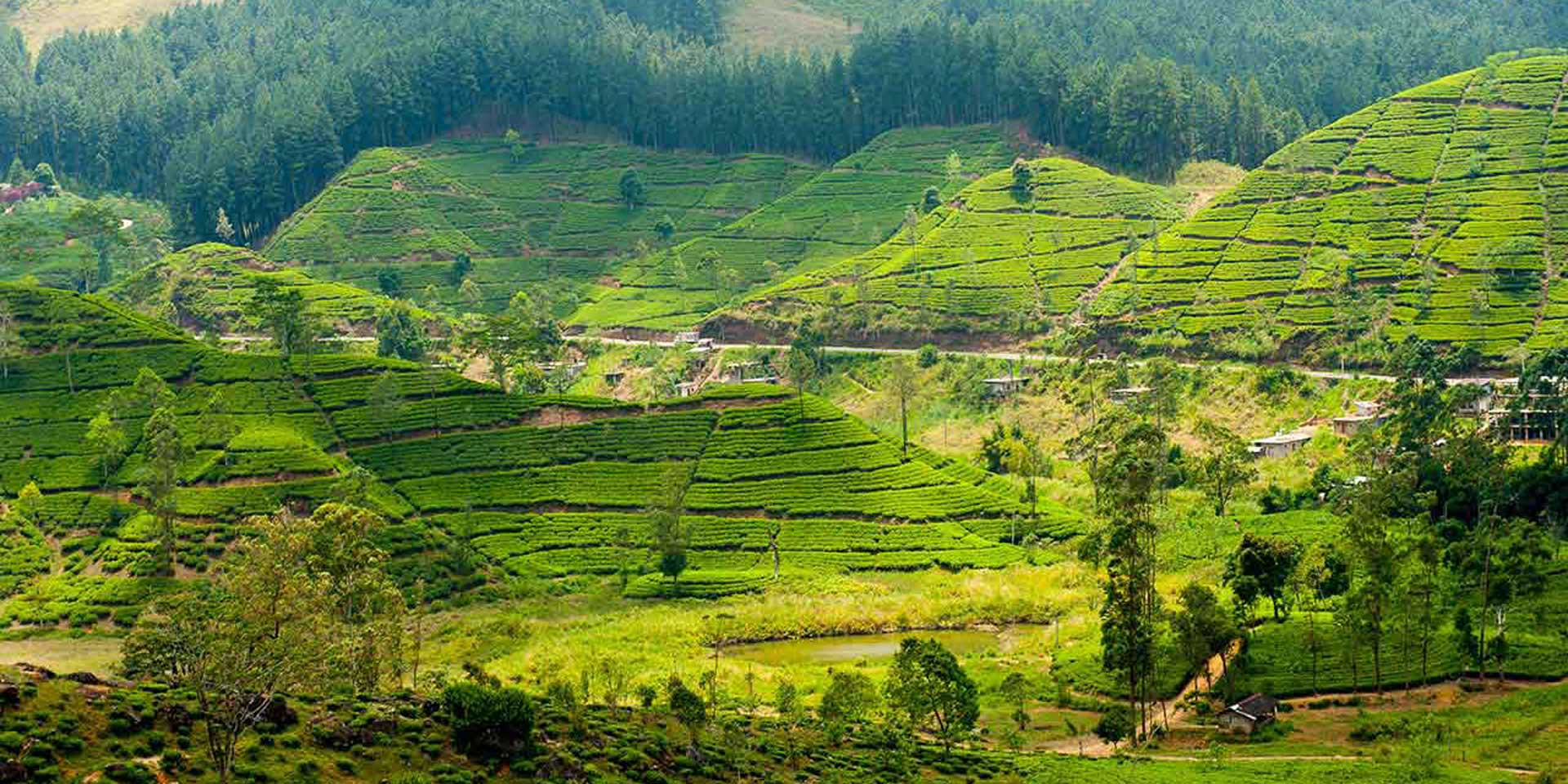
Shopping and Souvenirs in Sri Lanka
Popular Traditional Crafts and Products
Sri Lanka is a shopper’s paradise, known for its wide array of traditional crafts and products. Handloom textiles, including vibrant saris and intricately woven fabrics, are among the most sought-after items. Wood carving, pottery, and brassware showcase the country’s rich craftsmanship and artistic heritage. Sri Lanka’s gem industry is world-renowned, offering precious and semi-precious stones in stunning designs. Ceylon tea, spices, Ayurvedic products, and batik textiles are other popular souvenirs that make for unique keepsakes and memorable gifts.
Traditional Markets and Bazaars
Exploring traditional markets and bazaars is a delightful way to experience the vibrant colors, flavors, and sounds of Sri Lanka. Pettah Market in Colombo is a bustling multi-ethnic market where you’ll find everything from local produce and spices to textiles and electronics. The cultural triangle, encompassing cities like Kandy, Anuradhapura, and Polonnaruwa, is home to vibrant street markets where you can browse through traditional crafts and artisanal products. Galle Fort, with its charming boutiques and art galleries, is another must-visit destination for shopping enthusiasts.
Souvenir Shopping Tips
When shopping for souvenirs in Sri Lanka, it’s essential to keep a few tips in mind. Firstly, be prepared to haggle, as bargaining is a common practice in local markets. Secondly, ensure that you’re buying from reputable sources, especially when purchasing gems and jewelry. Look for government-certified gem shops to guarantee the authenticity and quality of your purchases. Finally, be aware of the customs regulations in your home country regarding the import of certain products, such as spices or wooden artifacts, to avoid any issues when you return.
Sri Lankan Gems and Jewelry
Sri Lanka is renowned for its gem industry, which produces some of the world’s finest gemstones. From sapphires and rubies to topaz and amethysts, Sri Lanka offers a mesmerizing array of colorful gems. Whether you’re looking for a piece of statement jewelry or a more subtle keepsake, you’ll find a wide variety of designs and styles to suit your preferences. When purchasing gems and jewelry, it’s advisable to use reputable gem dealers and ask for certificates of authentication. This ensures that you are getting genuine gemstones of the highest quality.
Planning a Trip to Sri Lanka
Visa Requirements and Travel Tips
Before embarking on a trip to Sri Lanka, it’s important to familiarize yourself with the visa requirements and travel tips. Most visitors to Sri Lanka require a visa, which can be obtained online or upon arrival at the airport. It’s advisable to apply for the visa in advance to avoid any last-minute complications. When traveling to Sri Lanka, it’s essential to take precautions for your health and safety. Ensure you have comprehensive travel insurance, stay hydrated, and follow basic safety guidelines. It’s also recommended to research and plan your itinerary ahead of time to make the most of your visit.
Best Time to Visit Sri Lanka
Sri Lanka experiences two monsoon seasons, which influence the country’s climate and determine the best time to visit. The southwest monsoon brings rain to the southwestern coastal areas and the hill country from May to August, while the northeast monsoon affects the east coast from October to January. The best time to visit Sri Lanka is during the dry seasons, which are generally from December to March and from May to September. However, the weather can vary from region to region, so it’s advisable to check the specific climate conditions for your chosen destinations before planning your trip.
Accommodation Options
Sri Lanka offers a diverse range of accommodation options to suit every type of traveler and budget. From luxury beach resorts to boutique hotels, eco-lodges, and homestays, you’ll find something to cater to your preferences. The coastal areas are dotted with beachfront resorts that offer stunning views, swimming pools, and indulgent spa facilities. Inland, you can choose from heritage properties, colonial mansions, or boutique hotels nestled amidst lush green tea plantations. For a more immersive experience, consider staying at an eco-lodge or a homestay, where you can interact with the locals and gain a deeper insight into Sri Lankan culture and way of life.
Transportation in Sri Lanka
Getting around Sri Lanka is relatively easy, with several transportation options available. The country has a well-connected network of roads and highways, making it convenient to travel by car or bus. Taxis and hired cars with drivers are also popular options for exploring the country, providing flexibility and convenience. Trains are a scenic and leisurely way to travel, particularly in the hill country, offering stunning views of tea plantations and mist-covered mountains. Internal flights are also available for those looking to cover long distances quickly. When using public transportation, it’s advisable to be cautious about your belongings and take necessary precautions to ensure a safe journey.
Land Of Luxury: Exclusive Shopping Experiences In Abu Dhabi(Opens in a new browser tab)
Stylish.ae Adventures: Bungee Jumping Off New Zealand’s Highest Cliff!(Opens in a new browser tab)

:quality(70)/cloudfront-eu-central-1.images.arcpublishing.com/thenational/HY5TEZDY65EOPFQIRVLA6JZAW4.JPG)
